The Litecraft Blog lighting, style & innovation
Designer lighting buying guide

 When you introduce lighting into your home you’re adding purpose as well as a prettiness. Light can create a guiding glow or give a helpful illumination whilst also creating a warm and inviting ambience. It can create a statement as well as highlighting a much-used area. Our lighting buying guide will give you the best tips on how to give light to your interiors in the best and most efficient way. There are so many different styles of lighting, all unique in their own way and all offering different types of illumination. So, we’ll try and breakdown the key styles and functions for you.
When you introduce lighting into your home you’re adding purpose as well as a prettiness. Light can create a guiding glow or give a helpful illumination whilst also creating a warm and inviting ambience. It can create a statement as well as highlighting a much-used area. Our lighting buying guide will give you the best tips on how to give light to your interiors in the best and most efficient way. There are so many different styles of lighting, all unique in their own way and all offering different types of illumination. So, we’ll try and breakdown the key styles and functions for you.
Function
Accent lighting does exactly what it says in the name. This type of lighting accentuates a specific area, highlighting objects such as ornaments and wall accessories. Ambient lighting gives mood and ambience to a room. This type of lighting is usually the first installation with regards to decorating a room. Task lighting gives a direct and focused illumination onto an area that would be specifically used for practical activities. For instance, chopping, cooking, reading and writing. Task lighting helps prevents fatigue, promotes progression and helps improve ease and clarity. All rooms should feature more than one source of light. Combining different types of lighting will add more ambience and contrast to a room. Here we’ll look at the main types of lighting available.Ceiling lights
It’s very rare to come across a room that doesn’t feature some sort of ceiling light, whether it be pendant, chandelier or spotlight. Depending on the size of a room pendant lights and chandeliers can feature anywhere from a standard living room to a high ceiling hall way. Just make sure you take into consideration the dimensions and drops when looking at size and measurements. Ceiling lights come in an array of finishes and styles to suit all types of interiors, from industrial to shabby chic, classic to contemporary. For instance, a brushed metal finish would work better in a more industrial or antique setting. Whereas powder coated, glass and chrome finishes would be at home in a more contemporary interior. Pendant lighting can be installed singularly or grouped together to create a statement feature. Wider areas such as breakfast bars, island or dining tables will benefit from a wider ceiling light or two or three pendants grouped together.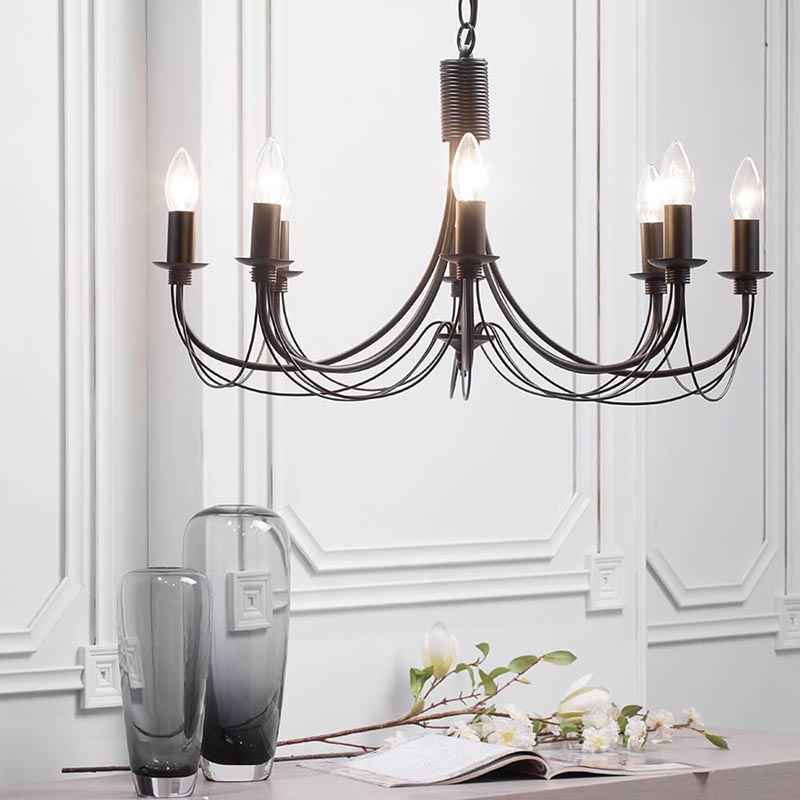
Table lamps
Most certainly one of the most versatile types of lighting around. Table lamps can be placed pretty much anywhere in a home, for any activity to give either accent or direct light. Ideal for bedside areas, study areas or even as a statement decorative piece on a side unit. Litecraft offer a range of table lamps, from desk lamps specifically for study rooms and offices to pretty glass decanter styles for decorative purposes.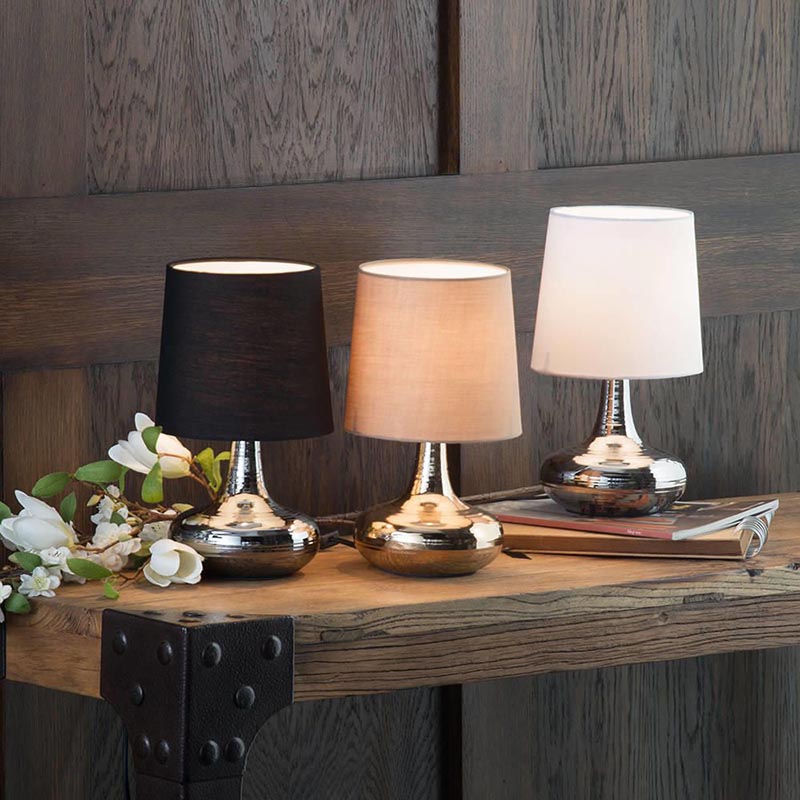
Floor lamps
Forgotten areas of the home such as dark corners and reading nooks will benefit from a floor lamp. Whether an arched design or adjustable neck, floor lamps can give task light as well as ambient and can be paired with table lamps for a coordinated look. Litecraft’s glass shade designs are also great for adding a decorative statement.
Wall lights and spotlights
Another way to add an ambient glow to a room is by installing wall lights. Furthermore, a subtle glow can be achieved with frosted glass detail and a low-wattage bulb. Team with a pendant or chandelier as a secondary lighting option when you want a more subdued ambience. Whilst originally seen in lounge and dining areas, Litecraft now offer bathroom wall lights including crystal designs for an elegant touch. Spotlights are handy installations and can be installed in a number of places around the house. Use together with other lighting for a back up glow. Install as accent lighting or to brighten a forgotten area, you can even have spotlights on bars and plates to give individual pools of light to specific work areas such as kitchen work surfaces.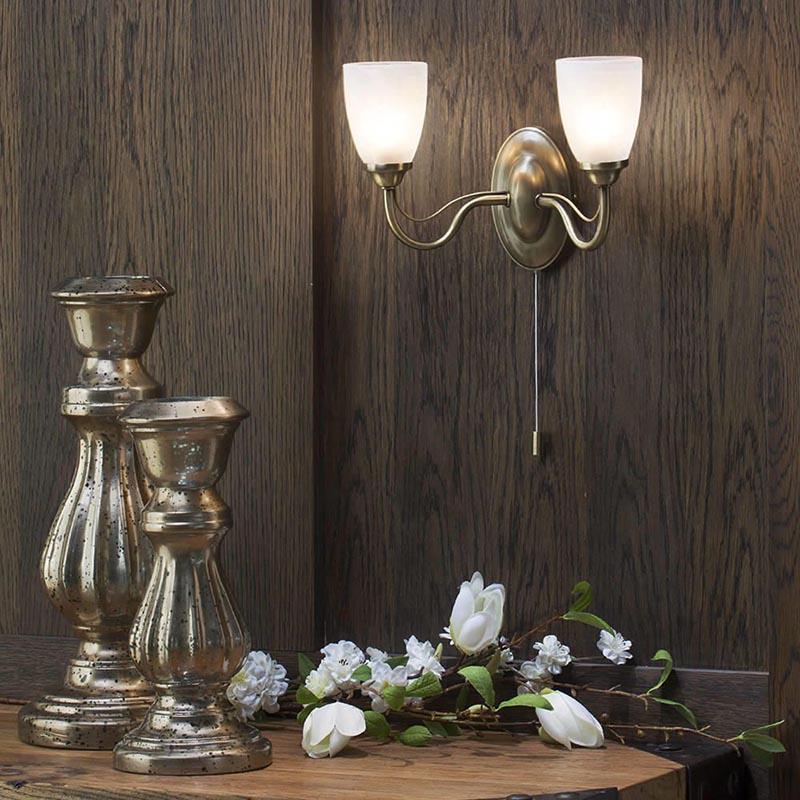

Decorative lights
Lighting doesn’t have to be restricted to practical styles. Have fun by adding decorative lighting such as string lights, marquee designs and lamps with vase-like features. Adding this type of lighting will give character and personality to your home as well as creating a welcoming ambience for guests. String and fairy lights also add a whimsical approach and are ideal for the festive season. These styles of lighting can be propped up against a shelf, placed on the floor or fireplace ledge, fairy lights can be wrapped around banisters, gathered together in a vase or simply draped across a mantelpiece.
Lampshades
Shades are a great option due to their versatility. Not only do they add warmth and ambience, they are also great at bringing an interior together by tying in colours and textures to help a room flow. Shades can be fitted to almost any light fitting, whether it be a simple easy fit ceiling light, a shaded table lamp or a floor lamp with an adjustable shade. Litecraft offer a range of traditional lampshades suitable for table, floor and ceiling including our Round Knife pleated range and our Box Pleat Shade collection. We also stock on trend designs to suit a particular theme including copper designs, wicker textured styles and even Tiffany glass ranges.
Decorative Cables and filament bulbs
These days with industrial and vintage styles really taking a fore front in the interior world, you can’t go wrong with decorative cables and filament style bulbs. Combining these two designs can create a high-end finish to a room and bring together a nostalgic and eye-catching room design. Hang them singularly or cluster them together with different shaped bulbs to create a statement. Alternatively, fit a filament bulb with a simple easy to fit shade or industrial pendant so they appear just peeping out from below.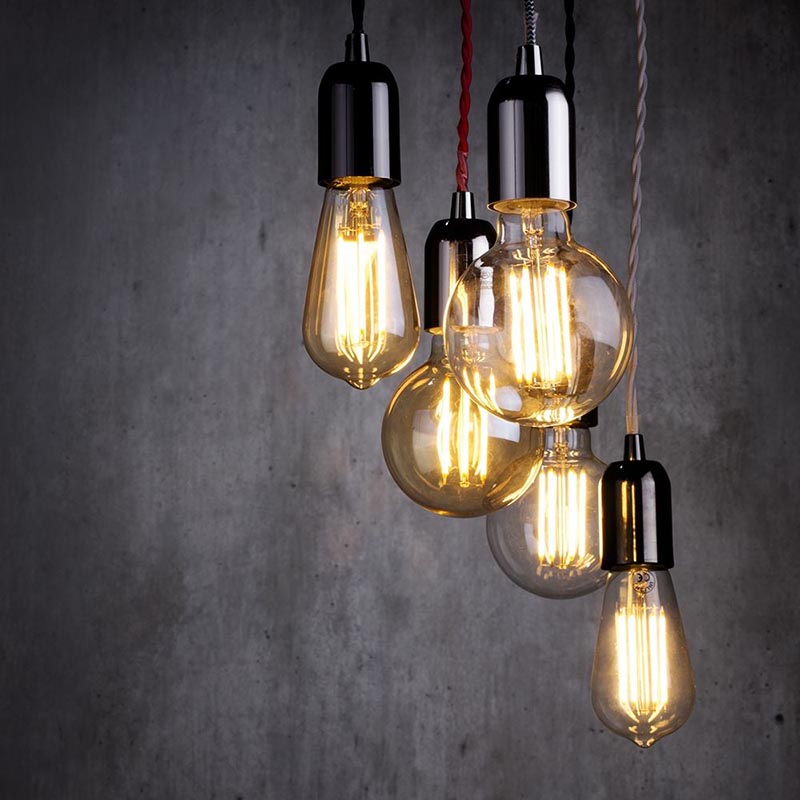
Bathroom Lighting
Lighting a bathroom can be tricky, prone to hot, damp and steamy spots they can be a hazardous when introducing lighting into them. Safety is a main priority when it comes to bathroom lighting, that’s why they are split into 3 zones. Each zone determines what class of light can be used with a handy IP rating to help.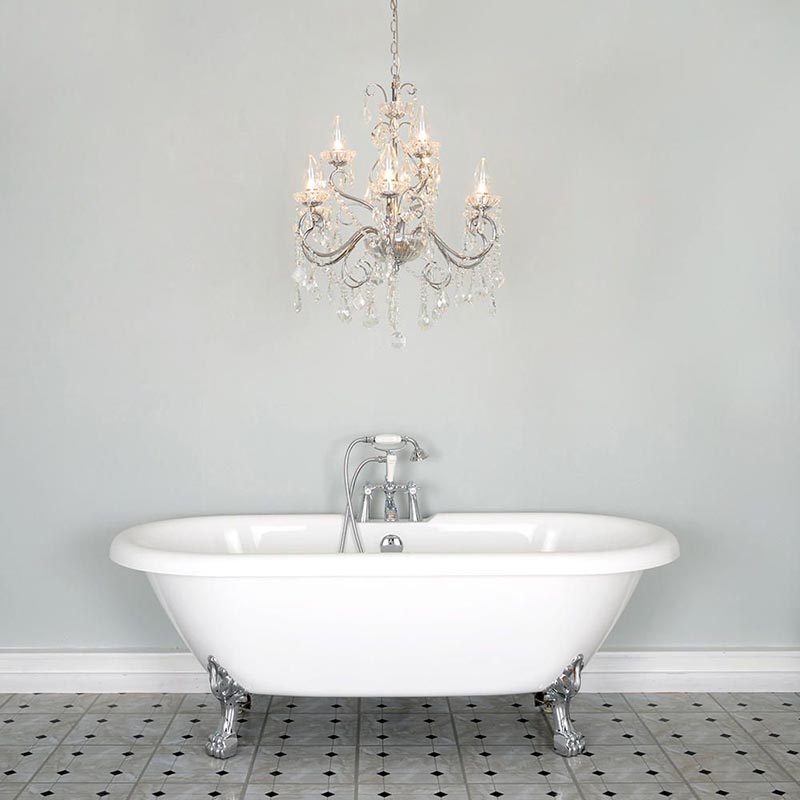
Zone 0
This is the area inside the bath or shower, so as you would expect this is not usually an area that will house illumination. However, if you were to light this area the type of fitting would have to be IPX7 rated and of a low voltage. At this time Litecraft do not supply this type lighting.Zone 1
This is generally the tiled area directly above the bath or shower at a height of 2.25m. Fittings with an IP rating of 65 are permitted here. These are usually downlighters or recessed style lights.Zone 2
Coming away from zones 0 and 1 is classed as zone 2, including areas near the bath such as windowsills. Fittings with an IP rating of 44 are permitted to be installed here, that includes lighting such as downlighters, track lighting, ceiling lights, wall light and mirror lights. For your own safety, only install products with the relevant IP rating in the stated bathroom zone. Here’s a diagram of the bathroom zones to simplify this for you:
How to choose your bulb
There are so many different bulb designs and specifications. Here we’ll break down the differences for an easier shopping experience.Type
Choose the bulb shape and size to best suit your lamp, here’s our range of bulb types to help you. At Litecraft all our lighting products are provided with a bulb recommendation whether on our packaging or on product pages via our website.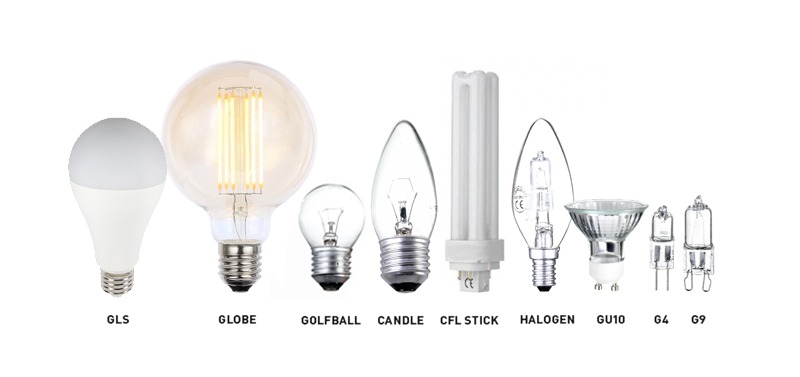
Cap
Caps provide the electrical connection between the bulb and the fitting. Again a clear bulb and cap specification will be provided on either the lighting box or the actual light fitting product page on our website. The following caps are available from Litecraft.
Compact Fluorescent Lamps (CFL)
Known as the original energy efficient bulb. They produce a warm white light that gives off a low heat emission. They are also a great substitute for the more traditional bulb, with an energy saving of about 80% compared to a more traditional bulb. The compact fluorescent lamp has improved over the years providing a quicker warm up time and more attractive shape.Light Emitting Diodes (LED)
LED bulbs are great if you’re after a more statement lighting effect. They can provide an array of special effects whether you want a softly lit room or a bright vibrant scene. There’s even the possibility to have a colour-changing feature, such as back-lit behind a wall mounted tv or attached along the top of a coved ceiling. Not just appealing to the eye, these little gems also have a great lifespan, a minimum of 20,000 hours to be exact and also boasting a very energy efficient low voltage feature too what’s not to love about these super bulbs. Litecraft offer a range of LED bulbs in an assortment of caps for a wide range of our products, as well as LED integrated lighting that feature non-replaceable LEDs.Halogen
If you’re after a dimmed and moodier ambience then check out our Halogen range. These bulbs are great for touch table lamps and dimmable lighting so perfect to dim the ambience later in the evening. Halogen bulbs also look great in crystal and glass fittings such as chandeliers as they boost the sparkle element with their crisp white light. These bulbs are great if you’re after an energy efficient bulb, up to 30% more than an incandescent bulb to be exact. The average lifespan of a halogen bulb is 2000 hours.Main measurements
Here’s a little technical information regarding bulb, the three key measurements to look at when purchasing bulbs are:- Lumen;
- wattage;
- kelvin.
Lumen
As of 2010, the brightness of a bulb is referred to as lumen as oppose to the original term of wattage. The European Legislation decided that lumen was a better way to measure the brightness of a bulb. Here’s a simple conversion for Incandescent to LED and Lumen with regards to their wattage:| INCANDESCENT | CFL/LED | LUMEN |
|---|---|---|
| 100W | 20W | 1500LM |
| 60W | 15W | 900LM |
| 40W | 10W | 600LM |
| 25W | 6W | 375LM |



